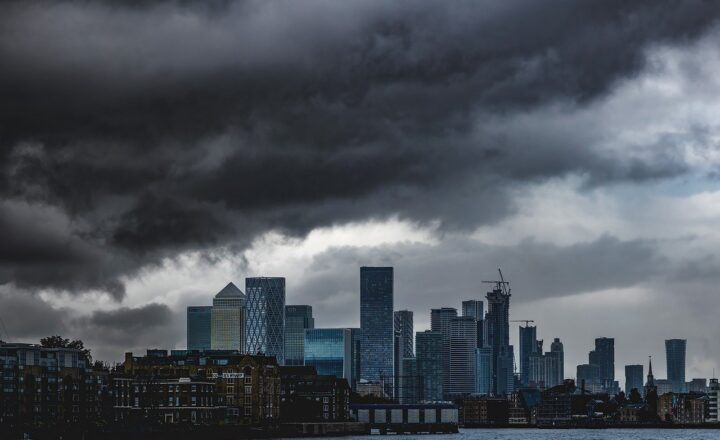The Great Flood: Myths and Evidence of Catastrophic Flooding in Ancient Times
November 15, 2024

The tale of a great flood echoes through countless cultures and civilizations, from the shores of Mesopotamia to the peaks of the Andes. Most notably, the story of Noah’s Ark in the Bible, the Epic of Gilgamesh in ancient Sumer, and similar legends across the globe hint at a shared memory of a monumental catastrophe. But what exactly is the truth behind these myths? Are they mere fabrications or do they hold some basis in reality? In this article, we’ll explore the evidence for catastrophic flooding events in ancient times and how they may have shaped the myths that persist today.
1. The Ubiquity of Flood Myths
Flood myths are consistent across various cultures, suggesting that ancient societies experienced significant flooding events. The following examples illustrate this phenomenon:
- The Epic of Gilgamesh: This ancient Sumerian story presents a great flood sent by the gods to cleanse humanity. Gilgamesh meets Utnapishtim, who survives the flood in a boat akin to Noah’s Ark, preserving life to repopulate the earth.
- The Bible: In the Book of Genesis, God floods the earth due to mankind’s wickedness, saving only Noah, his family, and pairs of every animal on the Ark.
- Hindu Texts: In ancient Hindu scriptures, the Matsya Purana recounts a flood where the god Vishnu saves King Manu from a deluge, which destroys all life.
- Native American Legends: Various tribes, such as the Ojibwe, tell of a great flood that wiped out the rest of humanity, leaving only a few to survive on a land-based ark.
These stories often share striking similarities but arise from entirely different cultures and times, prompting inquiry into whether these myths reference real catastrophic events.
2. The Role of Geography in Flood Myths
Flood myths may stem from geological and environmental realities faced by early human societies:
- The Black Sea Flood Hypothesis: Some researchers propose that the flooding of the Black Sea around 5600 BCE could explain regional flood myths. As the Mediterranean Sea rose, waters burst through the Bosporus Strait, inundating the previously fertile lowlands and creating vast lakes that could have affected neighboring civilizations.
- Mesopotamian Floodplain: The Tigris and Euphrates rivers frequently flooded, resulting in rich agricultural land, yet could lead to disastrous events. These cyclical floods likely inspired Mesopotamian flood legends like the Epic of Gilgamesh and the biblical account.
- Glacial Meltwater Flooding: As the last Ice Age ended, massive amounts of meltwater contributed to rising sea levels. This dramatic change in landscape could have resulted in significant flooding events that top ancient lore and memory patterns, suggesting an underlying truth to flood myths worldwide.
By examining geographical features, we can unravel how environmental factors may have influenced these enduring flood stories.
3. Scientific Evidence of Ancient Flooding
Modern geology has revealed a trove of evidence supporting catastrophic flooding events. Various studies have unearthed signs of rapid sediment deposition, which indicates past flood circumstances:
- Sediment Analysis in Mesopotamia: Researchers found layers of ancient sediment in present-day Iraq that suggest significant flooding in the region, coinciding with the timelines of flood myths.
- Ice Core Samples: Studies of ice cores provide insights into abrupt climate changes, leading to significant melting and subsequent flooding events. These events support the idea that ancient peoples experienced climate-related catastrophes firsthand.
- Archaeological Discoveries in the Mediterranean: Underwater archaeology in places like the Mediterranean shows evidence of submerged towns and cities, suggesting that coastal flooding occurred during periods of rapid sea-level rise.
This research suggests that many cultures’ flood myths could have been inspired by actual geological events.
4. The Psychological and Cultural Impact of Flood Myths
So, why do flood myths endure? The significance could lie in their universal message and cultural values, reflected in kind mods:
- Moral Lessons: Many flood myths focus on themes of morality, redemption, and human folly. They illustrate the consequences of societal misdeeds and often deliver the message of humility before nature and divine powers.
- Ritual Practices: Various cultures commemorate floods with rituals and festivals, showing how deeply entrenched these narratives remain in communal consciousness, forming a shared identity.
- Cautionary Tales: Flood myths often serve as warnings about nature’s majesty and unpredictability, reminding future generations of the power of water and the importance of respect for the environment.
The continued retelling of these myths has preserved important cultural narratives and collective memories that define human experiences across space and time.
5. The Modern Reflection on Flood Myths
In examining the relevance of these ancient myths, we can draw parallels to modern issues, such as climate change and the increasing frequency of natural disasters:
- Increasing Catastrophic Flooding: With climate change significantly impacting weather patterns, catastrophic flooding events are more prevalent than ever. These realities echo the ancient tales, calling upon society to reevaluate our relationship with nature.
- Rising Sea Levels: The potential submerging of coastal cities reflects the threats foretold in ancient lore, underscoring humanity’s need for sustainable practices and preparedness.
- Connecting Myths & Science: The intersection of ancient stories and modern scientific evidence reveals a deeper understanding of our environmental challenges and can inform contemporary disaster management practices.
The ongoing relevancy of flood myths enhances awareness of environmental issues and the lessons learned by our ancestors, guiding our actions as we confront similar challenges today.
Conclusion
The legacy of the Great Flood is woven into the fabric of human history, reflected in countless stories, traditions, and cultural practices. While it is easy to dismiss these tales as mere fables, the convergence of myths with geological evidence underscores their significance. By understanding the roots of these tales, we not only appreciate our collective past but also confront contemporary challenges that echo the flood myths of old. As humanity continues to navigate the complexities of climate change and natural disasters, the lessons from these ancient stories remain as vital as ever.
Understanding the resonance between myth and reality serves as a reminder that humanity’s respect for nature and the lessons learned from our ancestors will shape our destiny in an unpredictable world.







